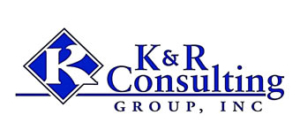Comparing Acumatica Cloud ERP vs. Sage Legacy
Sage is a traditional (legacy) ERP provider for small- to mid-sized companies. Sage 100, Sage 300, and Sage 500 each have its own feature set and each is targeted for a specific market segment.
Sage Background
The Sage products (50, 100, 300, and 500) have a long history and can offer adequate functionality for small- to mid-sized businesses. However:
- These products are priced per user, which penalizes growing companies.
- These products were built using much older system architecture, which is an issue in scenarios designed for the latest technologies, including cloud deployment options, customizations using current development tools, and integrations with CRM and other external software applications.
- These products were developed independently on different platforms, so there is no direct migration path from one product to another.
Acumatica offers a completely integrated ERP and CRM solution built on a true cloud architecture. Plus, you are only charged by system resources, not per user, whether Acumatica is deployed on-premises or in the cloud.
Acumatica provides the best value, performance, functionality, and ease of use of any ERP product available for small- and medium-sized businesses.
Feature Comparison
- Functionality
- True cloud* (built for cloud)
- True mobility
- Full function ERP*
- Flexible licensing options
- Multiple deployment options
- Scale as you grow
- Superior Return on Investment (ROI)
- Acumatica Cloud ERP
- Yes
- Yes
- Yes
- Yes
- Yes
- Yes
- Yes
- Sage
- No
- No
- No
- No
- No
- No
- No
Differentiators
“True cloud” means all functionality is accessible through the internet using a standard browser without the need for any software installation on the user’s device and no additional software licensing required. The bulk of the Sage product line uses older software development practices and platform architecture. These products were built for on-premises deployments and retrofitted for the cloud. Moreover, these products suffer from being unable to match the level of speed, functionality, and ease of use offered by a true-cloud platform. Acumatica was designed to leverage the capabilities of cloud computing and can run equally on-premises or in the cloud. You can even switch between the deployment models as well.
Out-of-the-box, Acumatica can be accessed on the device of your choice. Acumatica is built to resize every page and every screen to whatever device you are using. Every screen has the same information and flow, whether it is on a PC, tablet, or phone. Sage online products support browser access on multiple devices, but the web pages do not automatically resize to accommodate mobile devices.
Acumatica charges by computing resources used, not by user. Sage charges per user. These user costs increase as your company grows.
The Sage product line being compared here is scaled to various business sizes and needs, so not every product offers the same ERP functionality. However, because the bulk of the Sage product line was built on older client-server technology from the 1990s, not all of their products offer full functionality when deployed in the cloud as their on-premises counterparts. Acumatica offers a fully integrated financial and ERP solution that can scale with your business in the cloud or on-premises.
Both products are available through subscription licensing. Sage allows licensing based on user count, using either concurrent or named user licenses depending on the specific product. Acumatica offers a choice of licensing options and charges based on the resources needed – not by user – so your business is not penalized for growth.
Sage and Acumatica can support deployments on-premises, cloud, or hosted. Most Sage products cannot be deployed as true cloud because of their legacy architecture. This affects their accessibility, support costs, scalability, and functionality. Cloud-native Sage products (e.g., Intacct and X3) cannot be deployed in a private/hosted nor on-premises model.

